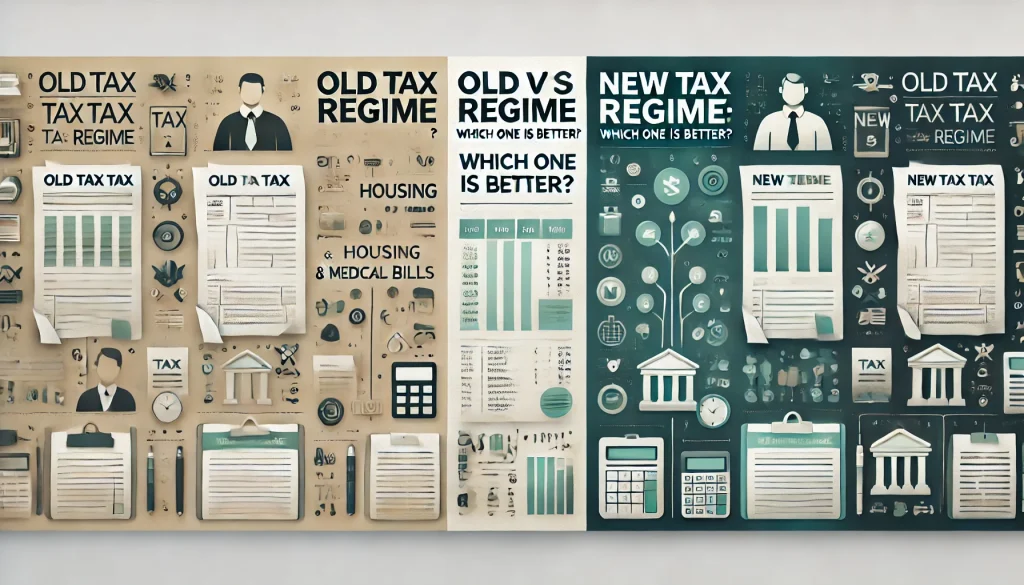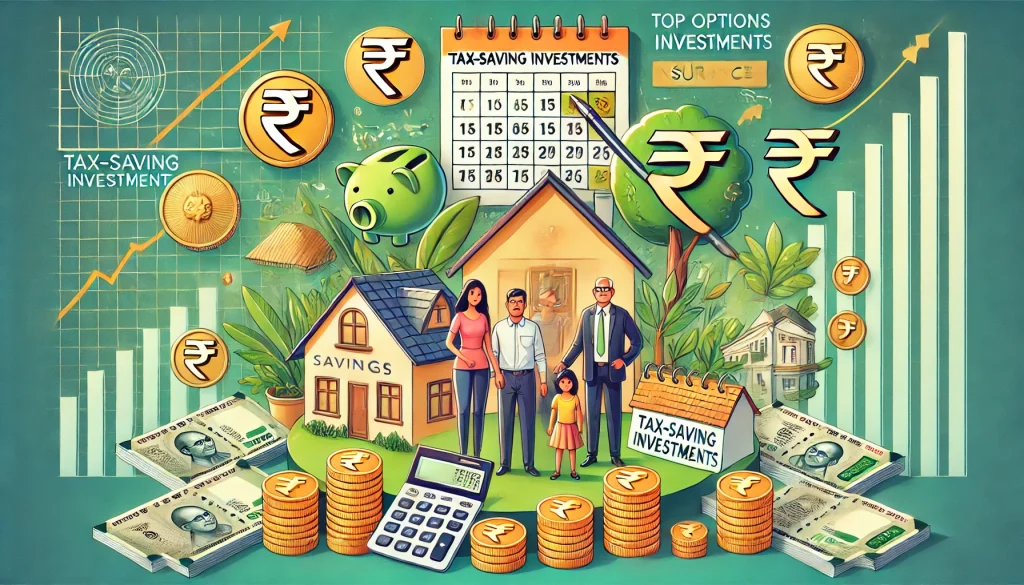
The calculation of income tax in India involves the use of income tax slabs which state the rates for the applicable assessment year. In India, the Finance Minister makes an annual announcement for income tax slabs. In the Union Budget 2023, Finance Minister Nirmala Sitharaman announced certain changes to the tax slabs under the new regime.
Scroll down to know the income tax slab rates for FY 2023-2024. You can find some of the key differences in the slab rates between the old and new tax regimes.
What are the Income Tax Slabs For FY 2024-25?
You (individual taxpayer) will be required to pay income tax in accordance with the slab system you belong to. By default, the new tax regime is applicable to taxpayers. Look at the following table that shows the default income tax slabs for FY 2023-2024.
| Tax Slab | Rates |
| Up to ₹3 lakh | Nil |
| ₹3 lakh to ₹6 lakh | 5% on income which surpass ₹3,00,000 |
| ₹6 lakh to ₹9 lakh | ₹15000 + 10% on income that exceeds ₹6,00,000 |
| ₹9 lakh to ₹12 lakh | ₹45,000 + 15% on income that exceeds ₹9,00,000 |
| ₹12 lakh to ₹15 lakh | ₹90,000 + 20% on income that exceeds ₹12,00,000 |
| Above ₹15 lakh | ₹150,000 + 30% on income which surpasses ₹15,00,000 |
As per the Union Budget, applicable from April 1, 2023, the basic income exemption limit if you opt for the next tax regime is ₹3 lakh. In this budget, the limit has been increased from ₹2.5 lakh.
Income Tax Slab for FY 2024-25 For New Tax Regime
Under the new tax regime, every individual’s income tax slab rates will be the same irrespective of their age. This signifies that this new tax regime does not discriminate against individuals depending on their age group. The changes were announced on February 1, 2023, and will be applicable from April 1, 2023, for FY 2023-24. Check out the table below to know the income tax slabs under the new tax regime:
| Income Tax Slabs | Income Tax Rates |
| 0 to ₹3 lakh | 0 |
| ₹3 lakh to ₹ 6 lakh | 5% |
| ₹6 lakh to ₹9 lakh | 10% |
| ₹9 lakh to 12 lakh | 15% |
| ₹12 lakh to ₹15 lakh | 20% |
| For income above ₹15 lakh | 30% |
This tax regime was announced in order to make the new tax system more appealing to every individual. It will reduce tax liabilities for middle-income families.
Income Tax Slab FY 2024-25 For Senior Citizens
As mentioned before, there will not be separate tax slabs for different age groups. However, for the old tax regime, the following tax slabs will apply.
| Tax Slabs | Rates |
| ₹3 lakh | Nil |
| ₹3 lakh to ₹5 lakh | 5% of the total income that exceeds ₹2.5 lakh |
| ₹5 lakh to ₹10 lakh | 20% of the total income that exceeds ₹5 lakh + ₹10,500 |
| ₹10 lakh and more | 30% of the total income that exceeds ₹10 lakh + ₹1,10,000 |
Income Tax Slab FY 2024-25 For Super Senior Citizens
The table below shows the income tax slab FY 2023-24 for super senior citizens (individuals aged above 80) under the old tax regime.
| Income Tax Slabs | Rates |
| ₹0 to ₹5 lakh | Nil |
| ₹5 lakh to ₹10 lakh | 20% of the total income that exceeds ₹5 lakh |
| Above ₹10 lakh | 30% of the total income that exceeds ₹10 lakh + ₹1,00,000 |
Note that cess and surcharge will be applicable for both tax regimes. Cess is charged at 4% while a surcharge is applicable over ₹50 lakh.
Deductions & Exemptions Allowed Under New Regime
Under the new tax regime, you can claim tax exemptions for the following instances:
- A ₹50,000 standard deduction in the new tax regime introduced by Budget 2023
- Conveyance allowance you receive as a part of employment to meet the conveyance expenditure incurred
- Deductions of the amount deposited or paid in Agniveer Corpus Fund u/s 80CCH(2) (introduced by Budget 2023)
- Transport allowances for specially-abled individuals
- Gifts of up to ₹5,000
- Incentives for official purposes
- Any compensation you can receive to meet your travel needs on tour or transfer
- Deduction for employer’s contribution to NPS, EPF, and superannuation accounts [Section 80CCD(2)]
- Deduction of family pension income under Section 57(iia) as per the Union Budget 2023
- According to Section 24, interest on a home loan of a let-out property
- Exemption on gratuity u/s 10(10), voluntary retirement 10(10C) and leave encashment u/s 10(10AA)
- According to Section 80JJA, a deduction for additional employee cost
Exemptions Omitted Under the New Tax Regime
There are nearly 70 exemptions and deductions that are omitted under the new tax regime. Among these, deductions u/s 80C of up to ₹1.5 lakh, medical premiums u/s 80D, HRA exemption, etc., are still omitted.
From the above section, it is evident that some exemptions are allowed. This includes the standard deduction and several exemptions. If you are looking for exemptions and deductions you cannot claim under the new tax regime, here is a quick glance.
- Professional tax and entertainment allowance on salaries
- Deductions under Section 80TTA and Section 80TTB
- Minor child income allowance, Helper allowance, and allowances for children’s education
- Leave Travel Allowance (LTA)
- Other special allowances as per Section 10(14)
- Chapter VI-A deduction (Section 80D, Section 80C, Section 80E, etc., except Section 80JJAA and Section 80CCD(2)
- Any kind of donation to a political party, trust, etc.
- Exemption or deduction on any other perks or allowance. This may include a food allowance of ₹50 per meal
- Contribution of employees (own) to NPS
- Under Section 24, interest on housing loans on vacant property or self-occupied property
- Deduction of entertainment allowance as per Section 16
Income tax slab for FY 2024-25- Old Tax Regime
Here is the list of tax rates for HUFs, individuals, NRIs, senior citizens and super senior citizens:
1. For HUFs, individuals and NRIs
| Income Tax Slab | Tax Rates |
| Up to ₹250,000 | 0 |
| From ₹250,001 – ₹500,000 | 5% |
| From ₹5,00,001 – ₹10,00,000 | 20% |
| Above ₹10,00,000 | 30% |
2. For Seniors
| Income tax slab | Tax Rates |
| From 0 to ₹3 lakh | 0 |
| From ₹3 lakh to ₹5 lakh | 5% |
| From ₹5 lakh to 10 lakh | 20% |
| From ₹10 lakh and above | 30% |
3. For Super-seniors
| Income Tax Slabs | Tax Rates |
| From ₹0 to ₹5 lakh | 0 |
| From ₹5 lakh to ₹10 lakh | 20 |
| From ₹10 lakh and above | 30 |
Differences Between The New Tax Regime & The old Tax Regime
To make it easier for everyone to file taxes, Finance Minister Nirmala Sitharaman has announced a change in the new tax regime. This new regime will become the default one for anyone filing ITR. Unless you specifically opt for the old tax regime, your income is taxable under this new tax regime.
That is why several new deductions and exemptions have been introduced in the new tax regime to make it more attractive. In addition, the rebate under Section 87A of the Income Tax Act has increased so that it covers a taxable income of ₹7 lakh (tax rebate- ₹25,000) instead of just ₹5 lakh (tax rebate- ₹12,500).
Any resident Indian individual earning a total income of less than ₹5 lakh can easily claim a rebate under Section 87A. As per the new tax regime, the maximum rebate payable u/s 87A is ₹25,000 from FY23-24
Therefore, it is quite obvious that if your income is below or up to ₹7 lakh, you are not liable to pay any taxes. In the old tax regime, this tax rebate was available for individuals with an income of ₹5 lakh or below. Under the new tax regime, the government has also reduced the highest surcharge rate from 37% to 25%
Additionally, in the new tax regime, there has been a hike in the basic exemption limit to ₹3 lakh from ₹2.5 lakh, while the number of income tax slabs has decreased from 6 to 5 in FY 2023-24. For salaried individuals and pensioners, a standard deduction of ₹50,000 is now applicable. Also, if you are a family pensioner, you can claim a standard deduction of ₹15,000.
However, the old tax regime allows a multitude of tax deductions and exemptions, including the popular deductions under Section 80C, HRA and LTA, etc., which can massively reduce your taxable income. Therefore, the major differences between both (old and new tax regimes) are their tax rates and benefits.
Conclusion
From the above piece of information, it is evident that the Government of India has introduced certain changes to the existing income tax slab. In comparison to previous tax, there are almost 70 exclusions or deductions to help in the reduction of taxable income and income tax liability. So before opting for the new tax slab, it is imperative to keep certain conditions in mind.


